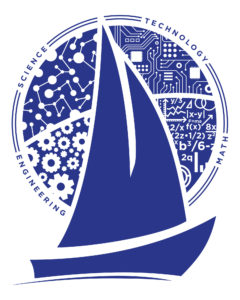Why STEM and Sailing?
By John O’Flaherty, Executive Director
Community Boating Center, Providence, RI

Mastering upwind sailing or performing the perfect roll tack are noble skill sets for any sailor. The complexity of sailing creates a challenging, yet alluring drive to succeed and understand the forces at work in our sport. While sailing fast is appealing to a select group, harnessing the wind, waves, and the mechanics of sailing are natural motivators for all youth to pursue sailing (and science) as a life-long interest.
When we first approached US Sailing to discuss the success of our STEM (Science, Technology, Engineering, Math) sailing initiatives in Providence, RI we chose our words carefully. We weren’t sure that our program emphasis on learning “about” sailing versus “how to sail” would win over the hearts and minds of the sport’s national governing body. We were thrilled that US Sailing not only listened, but embraced the concept to expand the influence of sailing as a medium to engage youth in hands-on science.
There’s a nationwide movement to get youth interested and engaged in science and mathematics. Many initiatives have been created to address the skills gap that exists in a new economy that is technology focused and knowledge driven. Today’s youth are tomorrow’s workers. A recognized need to increase STEM skills has led to targeted government, corporate, and school-based programs that are changing the landscape of education.
Sailing programs nationwide are rich environments for STEM learning. Every time a student steps into a boat, pulls the tiller, or trims a sail they are experiencing powerful lessons. The weather above, the water below, and everything on the boat in-between can provide daily, real-world science lessons. Connecting these hands-on, experiential learning experiences to educational objectives can open up a whole new world of learning and opportunity to both sailors and sailing programs. Adding or enhancing STEM to a sailing curriculum has the potential to be both philosophically and financially beneficial.
Given the crisis in today’s educational model, sailing programs have an opportunity to effect change. Answering the call for education reform, sailing programs can combine STEM content with unique on-the-water training in after-school, summer, and community partner learning experiences. Moving the needle in high-quality program offerings is an award onto itself.
Beyond doing the right thing, STEM based sailing pays. Many sailing facilities struggle with tight budgets and limited resources. Adding STEM content, in a significant manner, can expand your business model with new program offerings or make your current program more attractive to partners and funders.
More or new after-school programs can address seasonality challenges for programs historically run only in summer. Increasing the time-frame in which expensive capital assets like boats are used makes good business sense. Offering after-school jobs to sailing instructors or increasing the season of a program director can help with recruitment, retention, and job satisfaction.
Financially, STEM based programs can attract new funders and program partners that may be targeting educational versus recreational or instructional venues. Sailing program providers can write STEM-specific grants or benefit from “pass-through” funding from organizations that have already been awarded grants for STEM based initiatives.
US Sailing’s Reach program is an invaluable resource for sailing program providers to test the waters or enhance current STEM education. This modular, scalable approach offers great flexibility for providers to learn and grow right alongside their sailing students.
